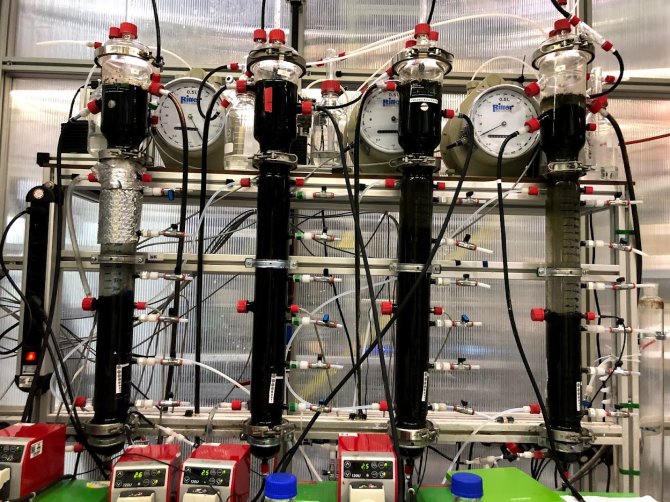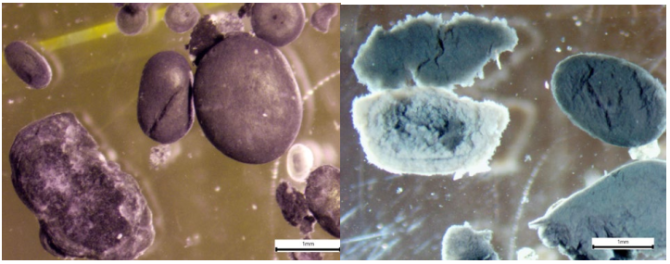
Project
The role of organic substrate and shear forces in anaerobic sludge granulation
Anaerobic wastewater treatment is a wellestablished technology, which converts organic pollutants contained in wastewater into energy-rich biogas.
Design of compact anaerobic bioreactors requires formation of granular sludge, i.e. spherically shaped biofilm that has excellent settling properties. However, for sometimes unknown reasons granular sludge does not form at all, or only develops at very slow rates. The main goal of this project is to gain more knowledge about the granulation process and use this knowledge to improve it.

Technological challenge
Anaerobic granulation is a complex process caused by various physical and chemical interactions between microorganisms and polymers (EPS) they excrete. In addition, these interactions are affected by operational conditions, substrate composition and indirectly by microbial population and activity. This also explains why the scientific literature on this topic often is conflicting. In particular, studies
on effect of the type of organic substrate on granulation from dispersed biomass are still lacking. In this research, the role of proteinaceous substrate on anaerobic granulation under fresh water conditions will be studied in an up-flow anaerobic
sludge blanket (UASB) reactor (Figure 1). Besides, the relationship between functional groups’ abundancy of EPS in the granules and granules’ strength will be investigated. This research will be carried out with granules (of different strengths) from full-scale plants of Paques treating various types of wastewater (Figure 2).
